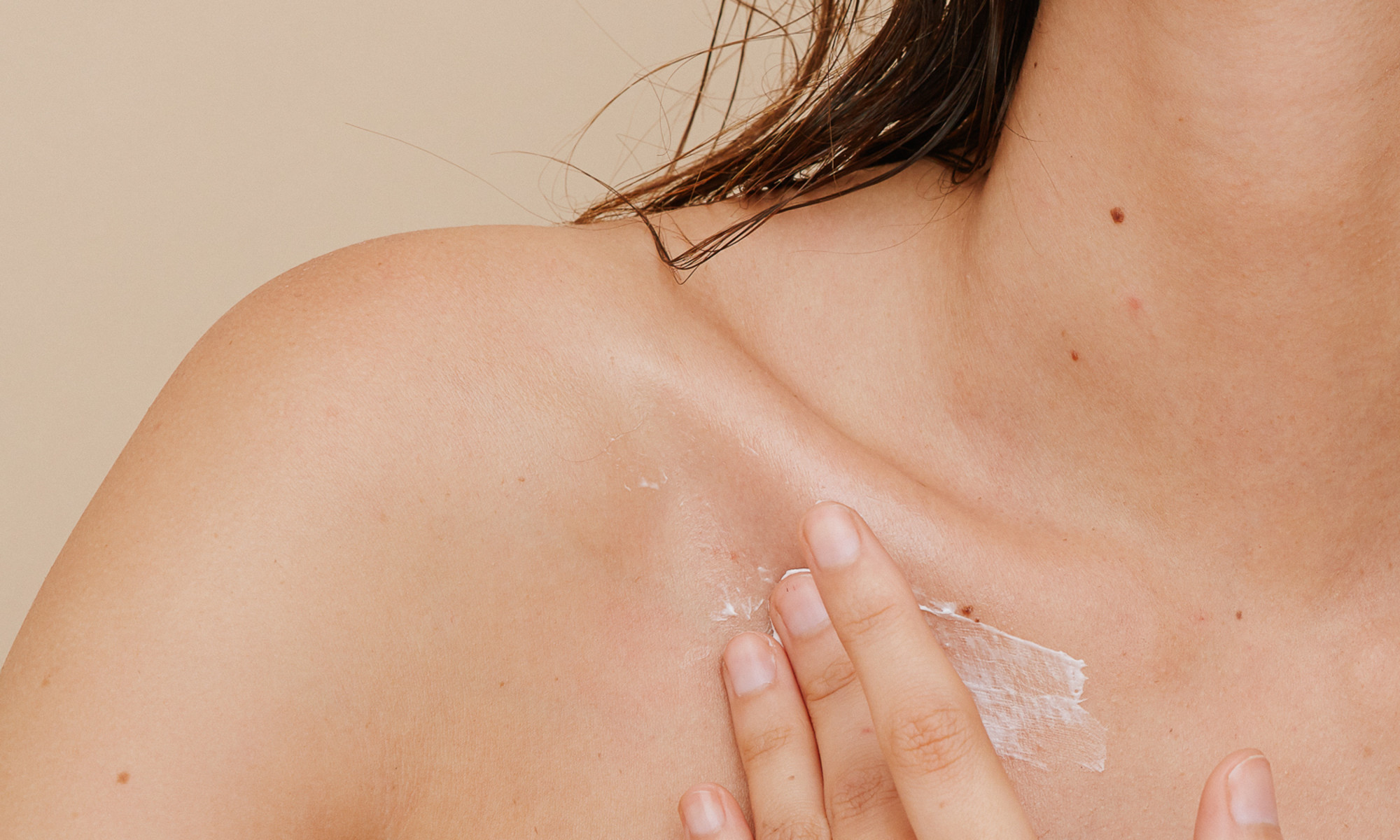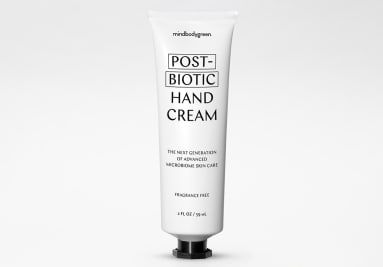5 Expert-Backed Tips To Treat Crepey Skin Head To Toe
Crepey skin may be more noticeable on visible areas such as the neck but, it’s also present under the eyes, arms, and on the legs. Here's how to treat it.


mbg Beauty Director
mbg Beauty Director
Alexandra Engler is the beauty director at mindbodygreen and host of the beauty podcast Clean Beauty School. Previously, she's held beauty roles at Harper's Bazaar, Marie Claire, SELF, and Cosmopolitan; her byline has appeared in Esquire, Sports Illustrated, and Allure.com.
Image by ohlamour studio / Stocksy March 26, 2023 Skin is skin is skin is skin—no matter what area of the body it's covering. Sure, there is some variability in the thickness of skin under the eyes versus skin on the feet, but overall, there’s more similarities than differences. This is why skin concerns we often experience on the face can also be present elsewhere on the body. Dark spots, for example, show up on the face due to age and UV exposure—but they’re also common on the chest, shoulders, hands, and other areas that are more exposed to sun damage. Another example: Crepey skin, which is thin skin that develops fine lines and a crinkly appearance, much like crepe paper. Crepey skin may be more noticeable on large and highly visible areas such as the neck and chest, it’s also present under the eyes, arms, and on the legs. The good news is that to tend to it requires similar tools no matter where it shows up. Here, skin care tips to treat crepey skin head to toe. 
Advertisement
This ad is displayed using third party content and we do not control its accessibility features.
1. Priority number one is hydration. "Moisturize, moisturize, moisturize—this can improve the appearance," says board-certified dermatologist Hadley King, M.D. tells us about crepey skin. Keeping the skin hydrated will help it appear plump and supple, and on the contrary, dehydrated skin can exacerbate the fine lines and folds. For the eye area, invest in a deeply hydrating eye cream. This way you can target the crepey skin without having to coat the whole face with a thick cream, especially if that’s not a texture you particularly enjoy. On the body—especially on the arms and legs—opt for one of these body lotions that specifically targets maturing skin. For the neck and chest, there are dedicated topicals for that specific area, as it’s quite sensitive skin. Personally, I allow my hand cream to play double-duty. High quality hand creams—like mindbodygreen’s postbiotic hand cream, and those found in this roundup of the best healthy aging hand creams—can treat the skin, usually at a fraction of the cost. Take, for example, mbg’s hand cream. It contains coenzyme Q10, an antioxidant fruit complex, oat oil, organic cold-pressed moringa seed oil, organic aloe vera, and a biotech postbiotic that improves epidermal framework reconstruction on the skin. The robust formulation not only deeply hydrates, but it provides ample antioxidant protection and improves skin structure. This ad is displayed using third party content and we do not control its accessibility features. Retinol is often considered the gold star healthy aging ingredient, as it improves collagen production, enhances skin cell turnover, and a host of other benefits. As collagen loss is a driving factor in crepey skin, improving collagen production is pivotal in its treatment. Here’s the caveat though: Areas that develop crepey skin tend to be areas where the skin is thin and sensitive inherently, such as the eyes and neck. Retinol is often not well tolerated in these spots. So in order to incorporate the ingredient into your routine, you’ll need to make some adjustments. First is to find a product formulated specifically for the area, such as a retinol infused eye cream or retinol body cream. You can also buffer the ingredient by sandwiching it between two layers of moisturizer (more tips on how to use it here). Finally, you can utilize my favorite hack: Skin cycling, which is where you’ll use retinol one night, but then take a few recovery nights in which you stick to calming moisturizers. 3. Much of what we associate with aging can be attributed to sun damage. In fact, research says up to 80% of all signs of premature aging are caused by UV exposure1. If you want healthy, vibrant skin the best thing you can do is be smart about your sun care. This ad is displayed using third party content and we do not control its accessibility features. The key to exfoliation is finding your sweet spot. You don’t want to do it too frequently or with too abrasive products, as you’ll run the risk of compromising your skin barrier. (A compromised barrier means damaged collagen, increased dryness, and inflammation—so ultimately, you’re back where you started.) However, when done correctly exfoliation can keep skin looking vibrant, improve product penetration, and even spur more collagen production. When exfoliating the face, chest, or neck, error on the side of caution. These are really delicate areas, so you don’t want to go overboard. Look for gentle chemical exfoliants such as lactic acid, mandelic acid, and low level glycolic acid. The latter of which has been shown to improve collagen production and dermal thickness2 in the skin. On the body (like the legs or arms) you can usually opt for something stronger, as the skin is thicker and more durable. You may want to try a body scrub or a body serum with chemical exfoliators. 5. While this isn’t an instant fix, eating a well balanced diet and prioritizing protein can help support your skin structure. As board-certified dermatologist Carl Thornfeldt, M.D., told us “years of ingesting insufficient or poor-quality protein is also a major contributor." For healthy adults, the recommendation for overall protein intake is about 1 gram of protein per kilogram of body weight per day. If you're physically active, your needs may be higher. Collagen (a structural protein) is made up of amino acids, so ensuring you’re getting your fill can mean your body has the adequate tools it needs to create more collagen over the years. One way to supplement your protein intake is through collagen powders. Collagen is a protein made of peptides, but it's not a complete protein—it doesn't have all nine of the essential amino acids (it's missing tryptophan and is on the lower side on a few others)—but can absolutely contribute to your overall daily protein goals and needs. Not only can collagen help folks meet their daily protein intake3, but hydrolyzed collagen has been shown to support skin elasticity, hydration levels, and promote youthful texture4. This ad is displayed using third party content and we do not control its accessibility features.Hydrate throughout the day.
Advertisement
Prioritize sun protection.
Advertisement
Support skin internally.
Advertisement

 JaneWalter
JaneWalter 
-v1646695196476.jpg?1148x800)






























![Are You Still Optimizing for Rankings? AI Search May Not Care. [Webinar] via @sejournal, @hethr_campbell](https://www.searchenginejournal.com/wp-content/uploads/2025/06/1-1-307.png)

